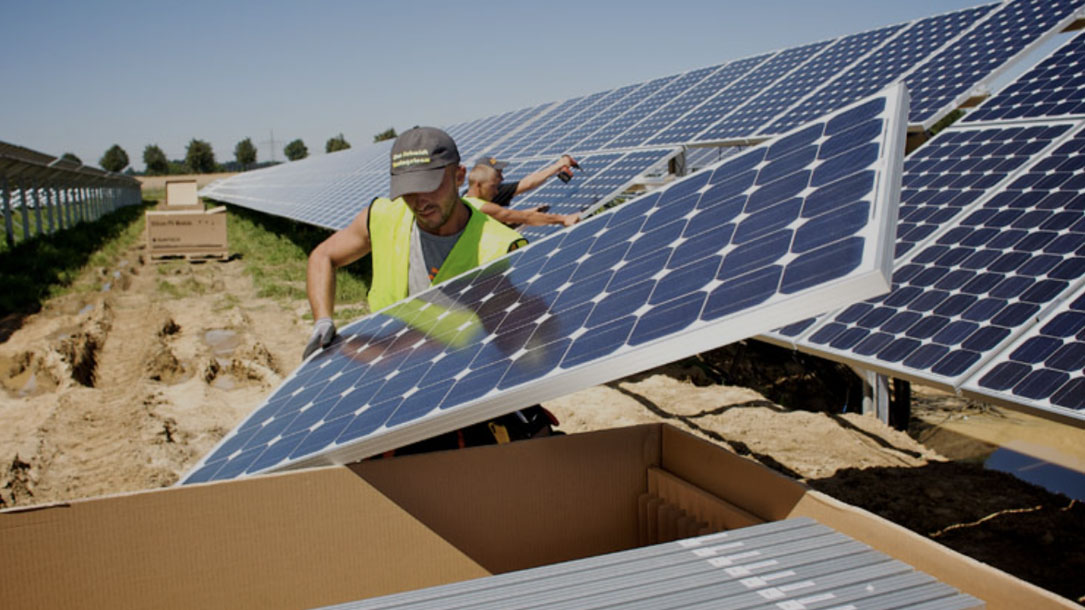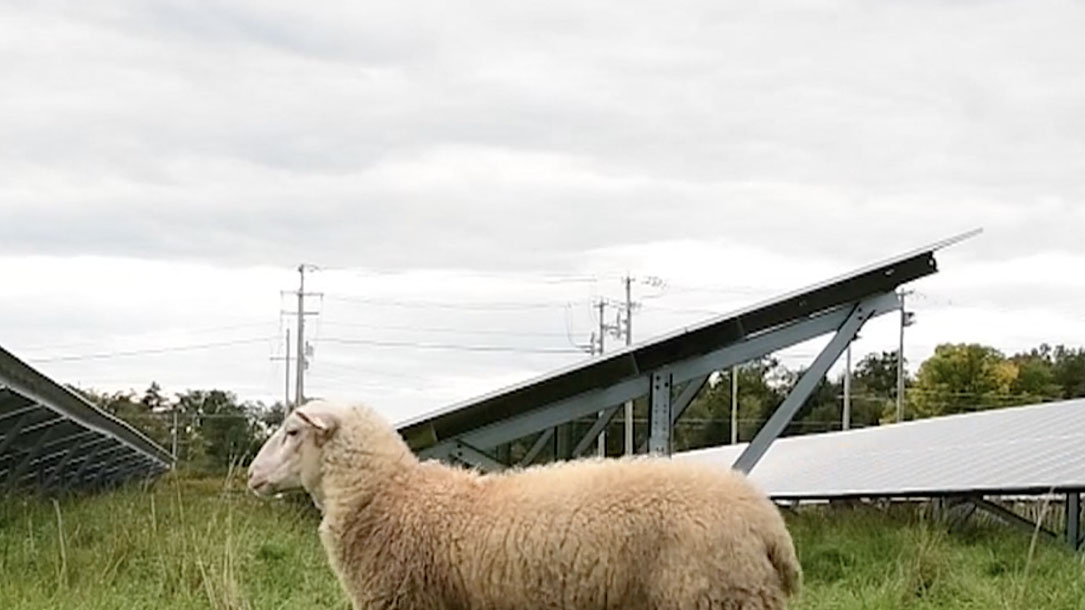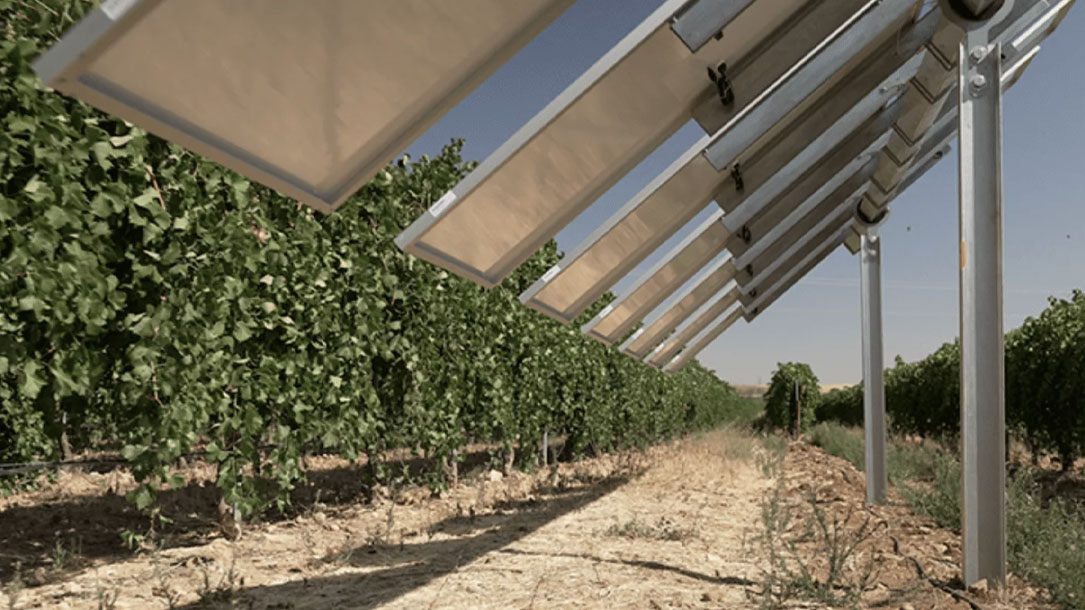
The Inflation Reduction Act is a game changer for nonprofits seeking solar + storage
The Inflation Reduction Act (IRA) has been signed into law. While the IRA is one of compromise, some good and some not-so-good, its impact on the energy sector is significant. For Clean Energy Group’s Resilient Power Project and its partners, the IRA will significantly influence nonprofits seeking to develop solar PV and battery storage (solar+storage) solutions in low-income communities by removing barriers to accessing significant federal tax incentives.

Bees, sheep, crops: solar developers tout multiple benefits
Silflower was among native plants that blanketed the vast North American prairie until settlers developed farms and cities. Nowadays confined largely to roadsides and ditches, the long-stemmed cousin of the sunflower may be poised for a comeback, thanks to solar energy.
Researchers are growing silflower at nine solar installations in the Minneapolis area, testing its potential as an oilseed crop. The deep-rooted perennial also offers forage for livestock and desperately needed habitat for bees, butterflies and hummingbirds.

Agrivoltaic solar tracker uses cables instead of buried steel
The Suntracker system is suspended by cables, rather than mounted on steel driven into the ground, providing what the company says is the lowest levelized cost of energy (LCOE) for high-clearance solar. Rute reports that by using cables rather than steel foundations, steel use is reduced by as much as 30%.
Another advantage of the cable system is that the land does not have to be disturbed in order to install the system, which is a benefit in the agricultural industry. It also enables the land to be returned to its original condition in the event that the solar installation were to be removed…

Massachusetts Clean Energy Act eases path for agrivoltaic projects
The Act clarifies that an agrivoltaic project is to be treated as an agricultural use, meaning that the land can continue to be classified as agricultural land for property tax purposes and that the project is exempt from special permit requirements.
This change in law further illustrates the legislature’s intent to help farmers continue their farming operations by utilizing renewable energy, and particularly solar energy, as a means of maintaining their land in agricultural use.

Solar, haying, and owning the solar array
Converting arable land to energy production undermines the future of farming. But innovators like Nate know it doesn’t have to be one or the other – if done right, solar can be leveraged to support farmers, rather than threaten them.
Seeing the Massachusetts SMART program as an opportunity for revenue diversification and farmland preservation, Nate pioneered a plan to own both the solar system and the land underneath. Million Little Sunbeams does not involve a lease to a solar developer but instead was designed to allow the Tassinari family to sell the excess energy to the surrounding community — a win for the family farm that has allowed it to stay in operation…

Iberdrola starts up Spain’s first smart agrovoltaic plant in Toledo
While combining solar energy and agricultural land is not new, one component that makes the Winesolar project stand out is that it will have a tracking system, with trackers from PVH, that uses artificial intelligence (AI) to determine the most efficient solar panel positioning over the vines at any time…

Spanish vineyards use solar panels to protect wine grapes
While combining solar energy and agricultural land is not new, one component that makes the Winesolar project stand out is that it will have a tracking system, with trackers from PVH, that uses artificial intelligence (AI) to determine the most efficient solar panel positioning over the vines at any time, according to Iberdrola. Techedge, an IT firm, will help the solar panel project further the wineries’ agricultural goals.
Sensors in the vineyards will record data including soil humidity, wind conditions, solar radiation, and even vine thickness to find the optimal position for the solar panels, giving the vines a fighting chance against the effects of climate change…

Agrivoltaics looks at farming around/among solar panels
Double cropping solar power and organic dairy production works successfully here, but the concept – called agrivoltaics – is still very new.
Agrivoltaics is a new umbrella term defined as any farming practices on the land supporting solar power.
Around the world, innovators are looking for ways that solar panels and agriculture can benefit from the other. Flowers, pollinator plants, alfalfa, grass, vegetables and greens, and fruits and berries are some of the potential crops that people are planting in conjunction with solar panels…

How installing solar canopies over canals can help California fight drought
A first-in-the-nation project to determine whether covering sections of canals with solar panels can help California reach its renewable energy goals is gearing up to break ground early next year…
Researchers from the University of California, Merced determined that covering the 4,000 miles of California’s open canals with solar panels could save upward of 63 billion gallons of water each year, the residential water needs of about 2 million people, or enough to irrigate about 50,000 acres of farmland…

Agrivoltaics looks at farming around and among solar panels
If you are driving to the West Central Research and Outreach Center (WCROC), look along U.S. Highway 59 for large pastures where cows graze among solar panels.
The cows, under the direction of Bradley Heins, Ph.D., University of Minnesota, use the panels for shade and shelter.
Double cropping solar power and organic dairy production works successfully here, but the concept — called agrivoltaics — is still very new…












